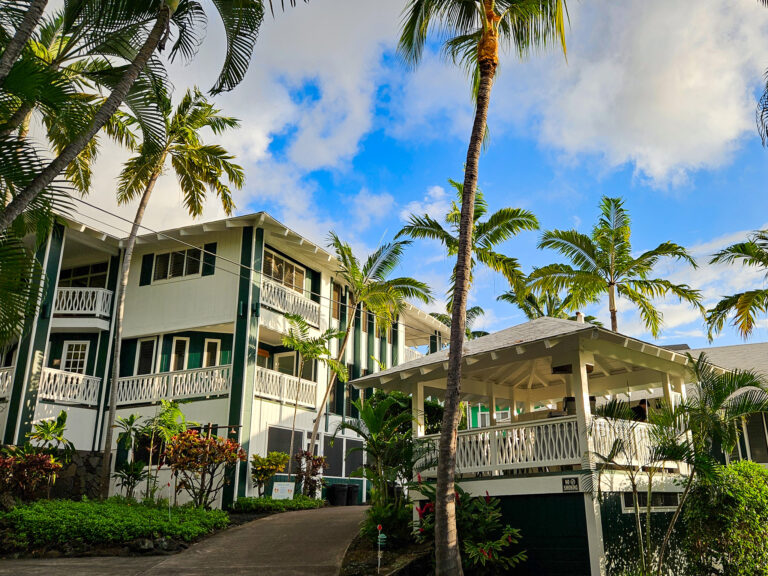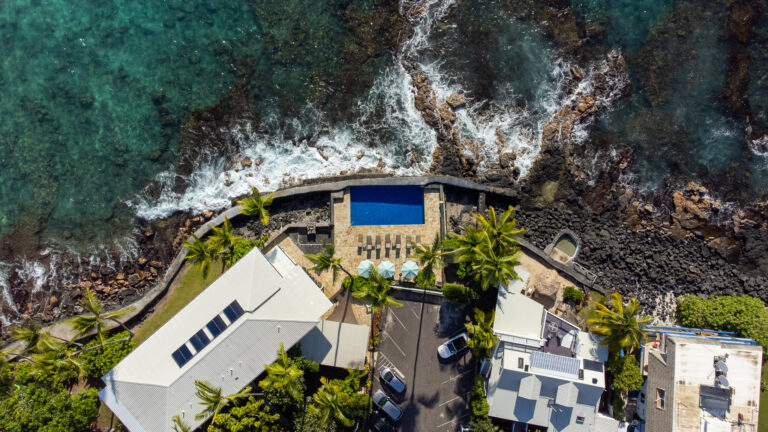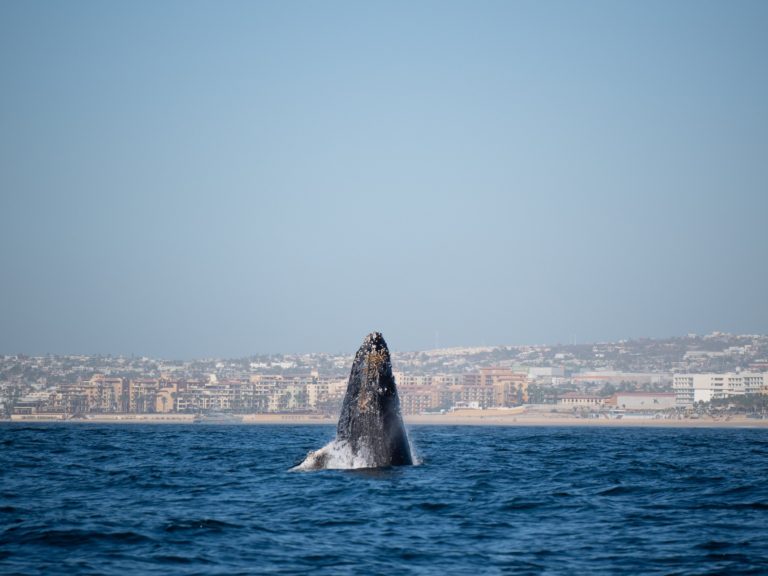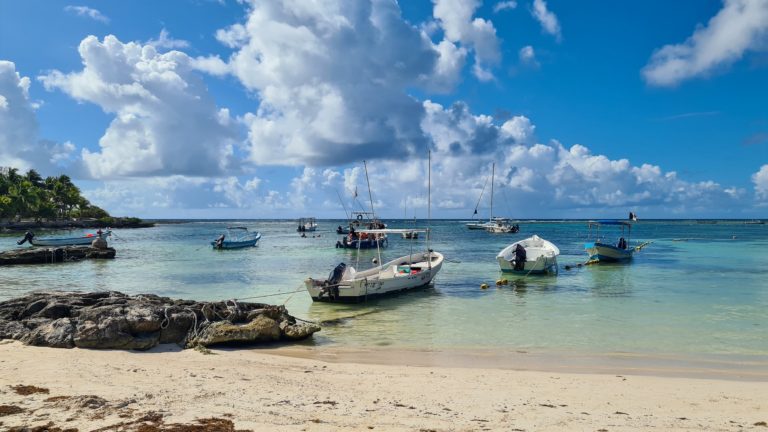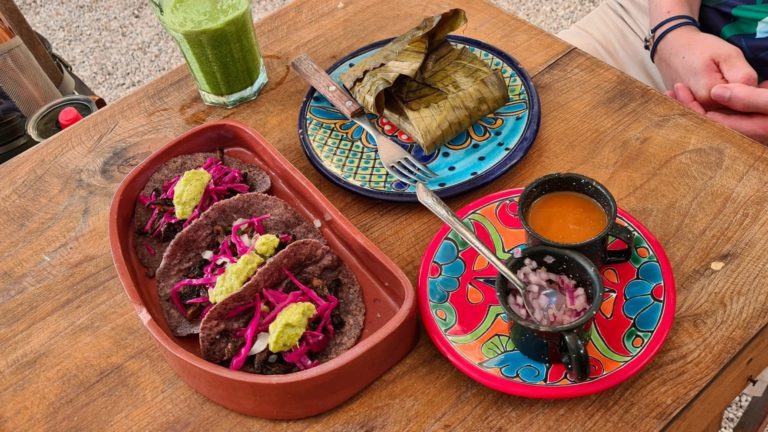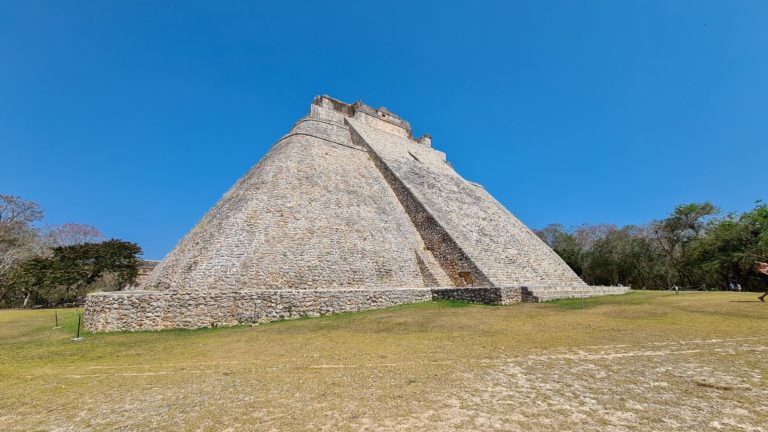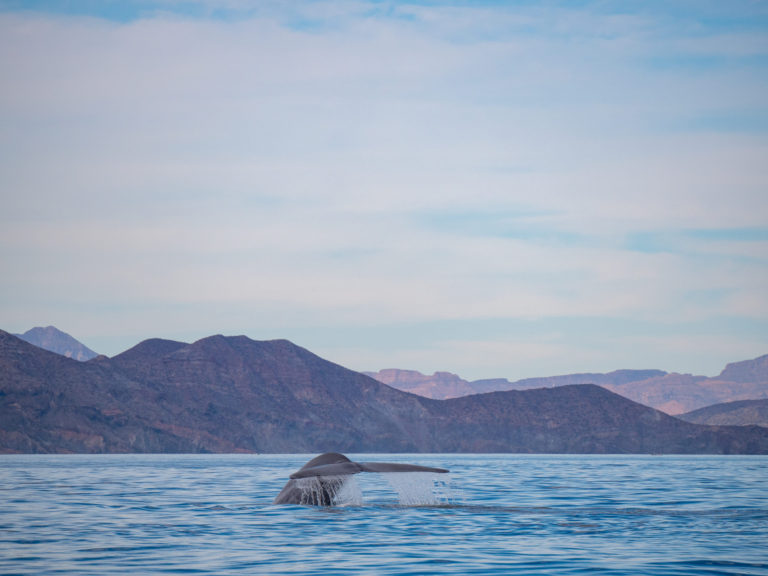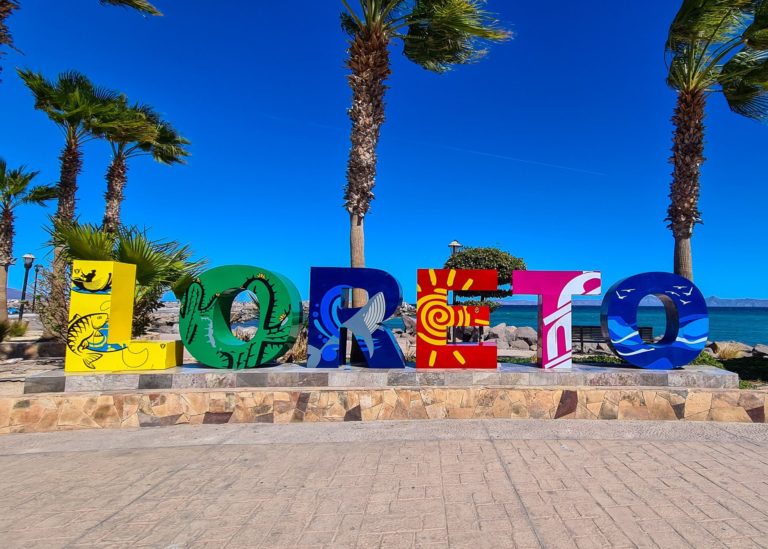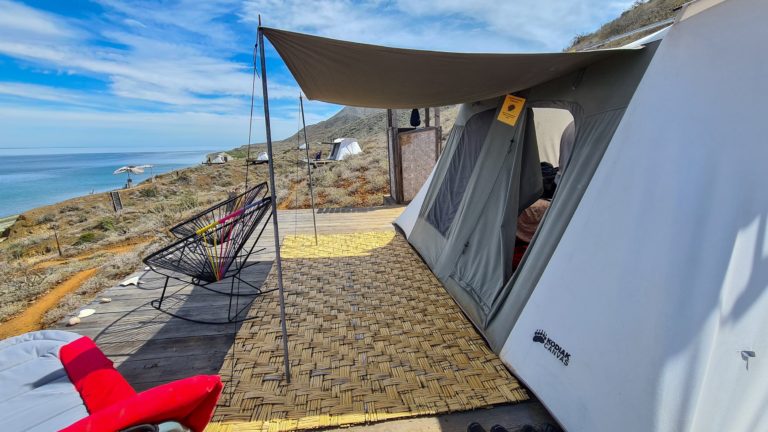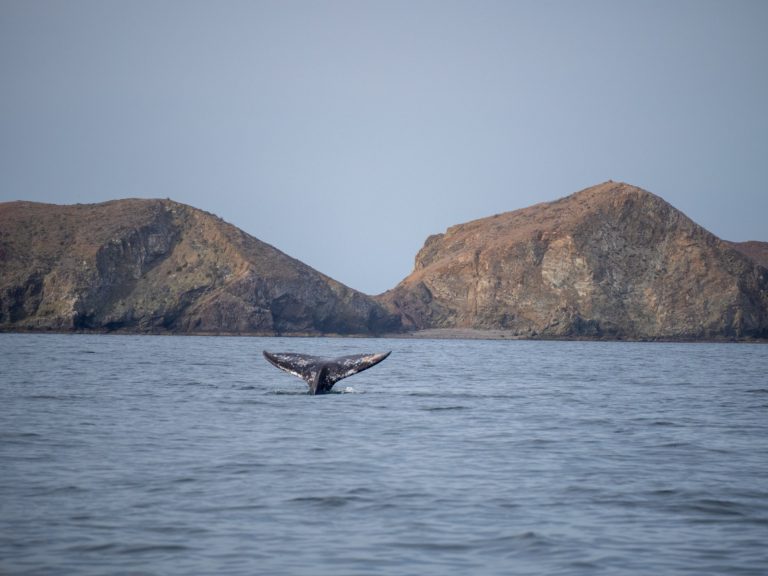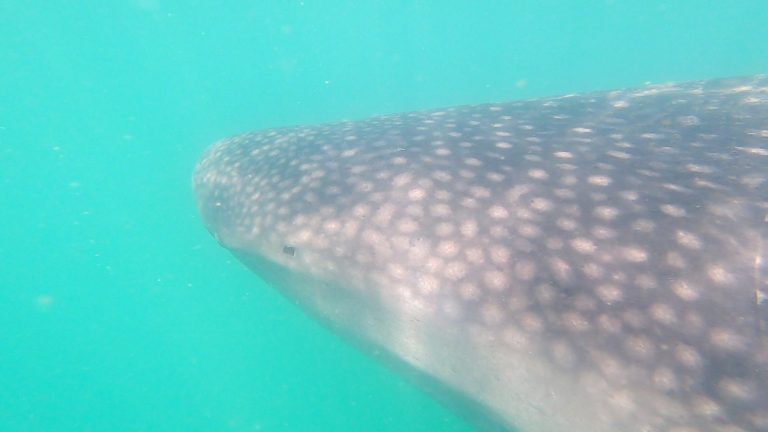Everything you need to know about Snorkelling with Sea Lions in La Paz
A complete guide to ethically swimming with Sea Lions in La Paz, Baja California Sur, Mexico!
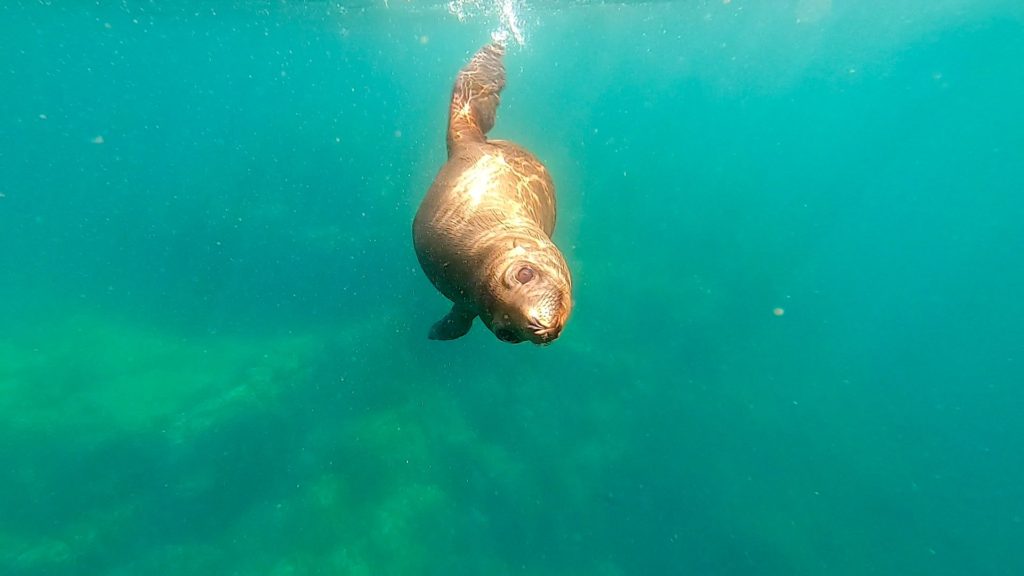
This post may contain affiliate links, which means we might earn a small commission on anything purchased through these links at no extra cost to you. Learn more on our disclaimer page.
Snorkelling with sea lions can be a once in a lifetime opportunity and, to some, more exciting than swimming with larger well-known species (like whale sharks). The waters around La Paz offer some of the best snorkelling conditions in the world and also contain two locations that are home to large sea lion colonies, which use the waters to rest and breed. Swimming with sea lions in the wild is unlike any other marine experience we’ve had, so we wanted to share with you everything you need to know about taking a La Paz sea lion tour and what it’s like to be in the water with such graceful and unique creatures.
Time needed: 1 day.
When to go: La Paz has nice weather all year round, but winter can be less crowded with cooler water temperatures.
Weather: Highs of 25-33°C in the summer (June-August) and 18-25°C in winter (December-February). La Paz gets very little rain and can actually go a whole year without even a shower.
Language: Spanish.
Currency: Mexican Peso.
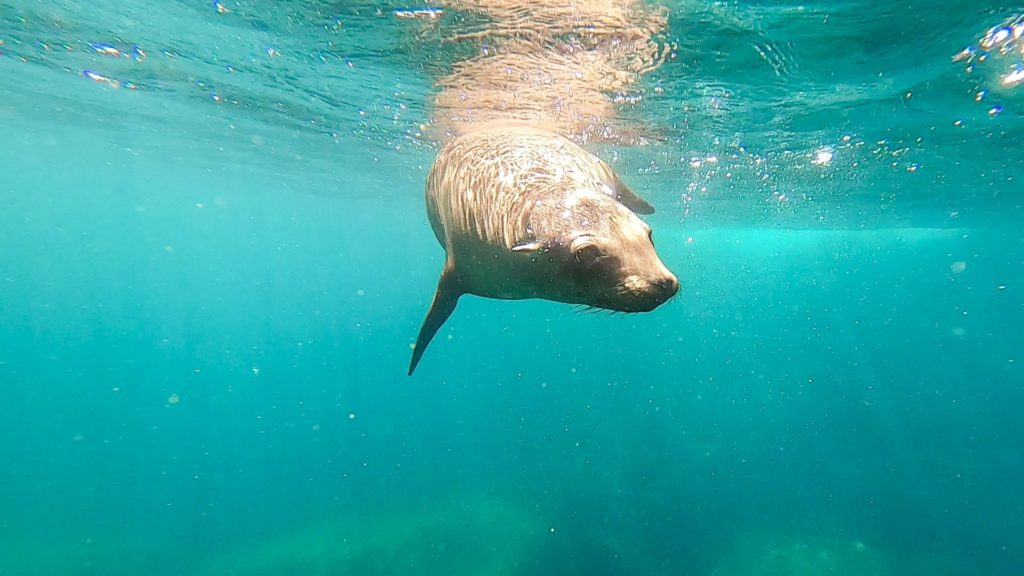
What is the difference between a sea lion and a seal?
Let’s start with the basics. Sea lions, seals and walruses are pinnipeds (semi-aquatic, flippered mammals). Sea lions are characterised by external ear flaps, long flippers and the ability to ‘walk’ on land. Whereas, seals have much smaller flippers and get around by wriggling on their bellies. Seals also lack visible ear flaps, while sea lions are generally much larger than seals. Sea lions are notoriously noisy creatures, barking loudly, while seals make much quieter grunting noises.
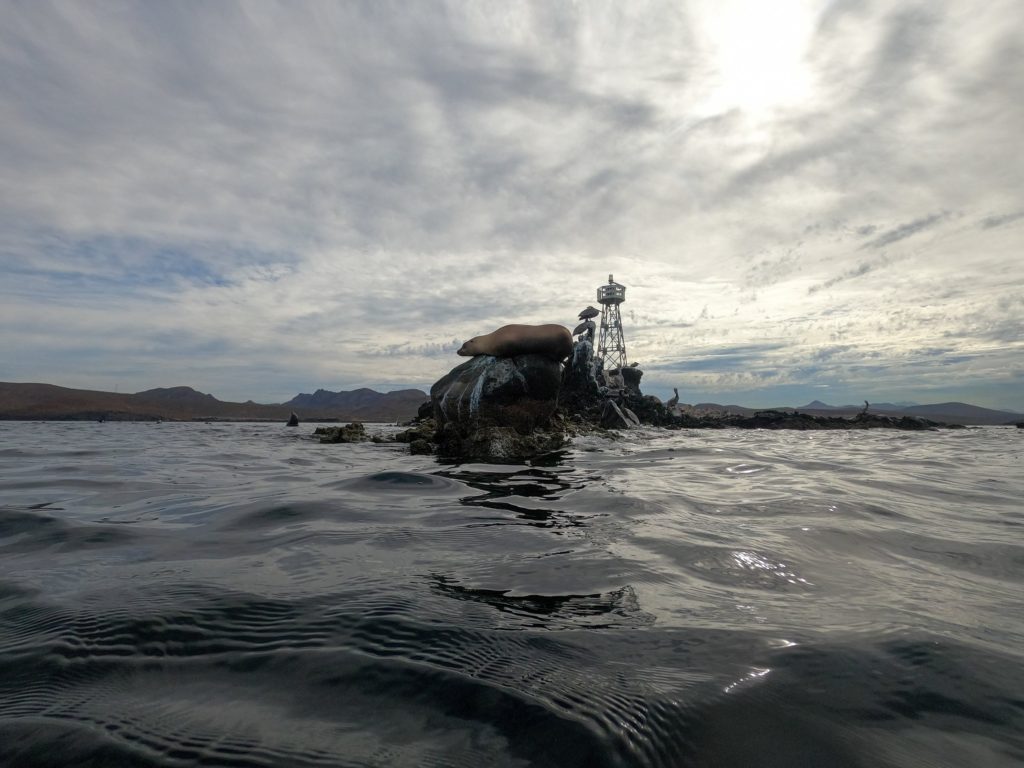
Where can you snorkel with sea lions in La Paz?
There are 2 spots in La Paz where you can swim with Sea Lions: San Rafaelito and Los Islotes at Isla Espíritu Santo.
San Rafaelito is a tiny island off the coast of Balandra, just north of La Paz. It has a small coral reef and is a popular spot for sea lions, who use the island to relax and reproduce. The sea lion colony here is quite friendly and if you arrive early you could have the island all to yourself. The visibility isn’t as clear as at Isla Espíritu Santo due to the water being really rich in nutrients (which is also what attracts whale sharks and other marine life to the waters around La Paz). But despite the sea being slightly murky, you can still see the sea lions really well.
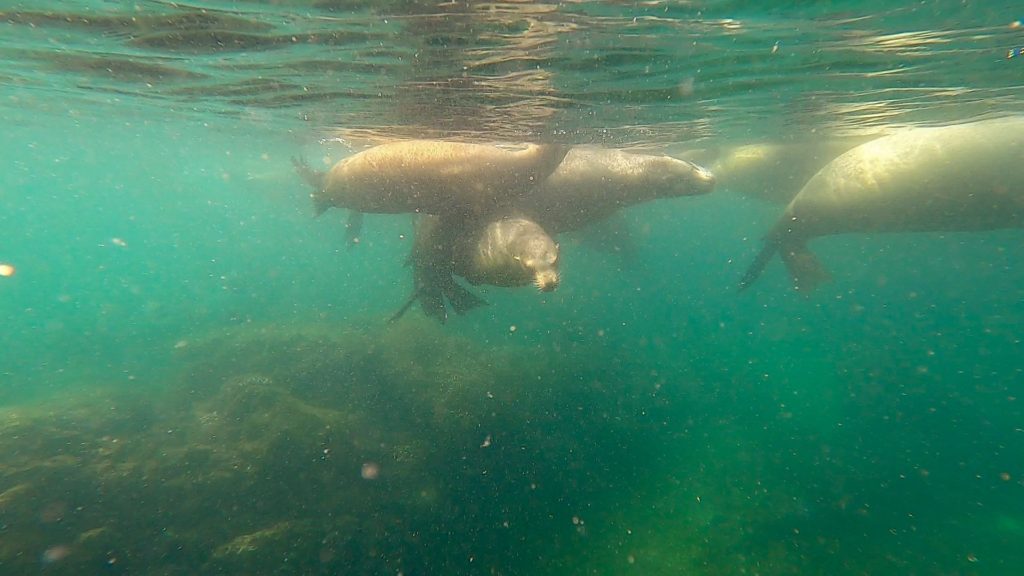
Los Islotes is located off the northern tip of Isla Espíritu Santo and is about an hour from La Paz by boat. It’s home to the largest sea lion colony in the Sea of Cortez, with over 600 on and around the island. The island has been a UNESCO World Natural Heritage Site since 2005 and a National Park since 2007 and evidence of human presence on the island dates back 9000 years. Los Islotes is also a popular breeding ground for sea lions and there are often playful and inquisitive pups. Sea lions are curious by nature so your chances of being approached by a curious sea lion is much higher.
The visibility around Isla Espíritu Santo is incredible. The water is crystal clear and the island contains some of the best reef we’ve ever seen (and Lucy’s dived on the Great Barrier Reef, so that’s saying a lot)! Among the colourful coral you can spot parrotfish, angelfish, trumpetfish, Moorish idols, pufferfish and rainbow wrasse.
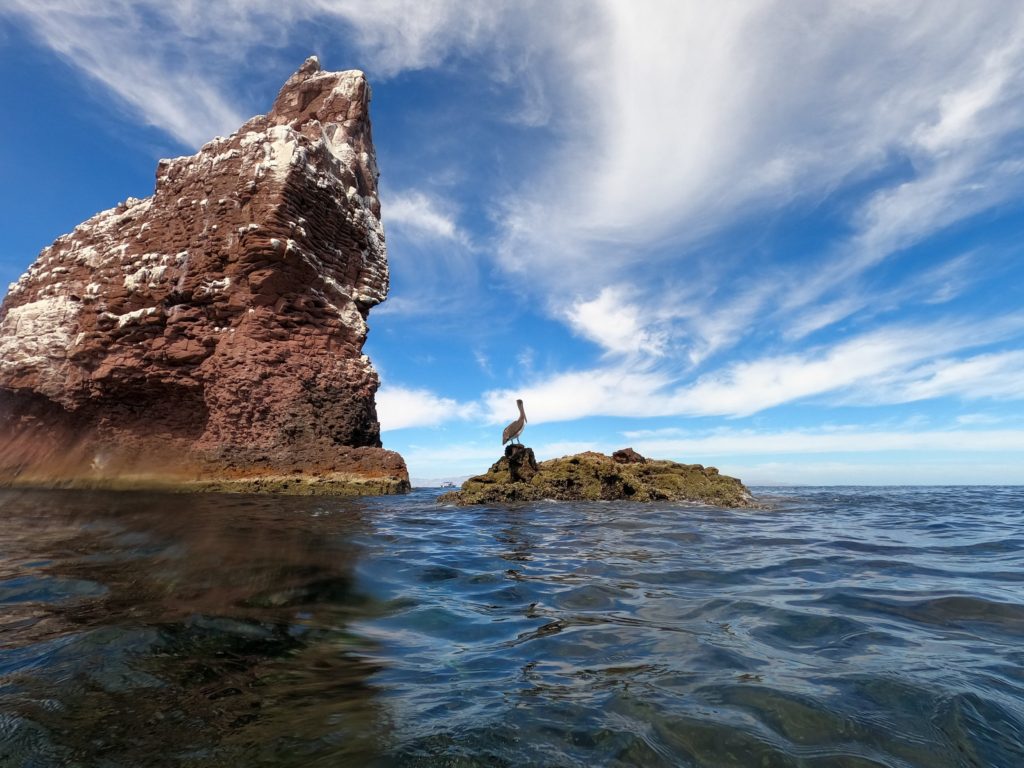
Interactive La Paz Map
Use this interactive map to see where San Rafaelito and Los Islotes are, as well as to discover more things to do and see in La Paz.
San Rafaelito vs Los Islotes
We’d highly recommend making time to explore both locations as they were quite different. Also, it’s important to remember that sea lions are wild animals and therefore don’t perform on request. By taking two trips you double your chances of meeting a curious pup or witnessing playful behaviour. But, if you can only take one trip, we would highly recommend it be Los Islotes, where visibility and reef are better and there are more sea lions so you’re more likely to meet a friendly one.
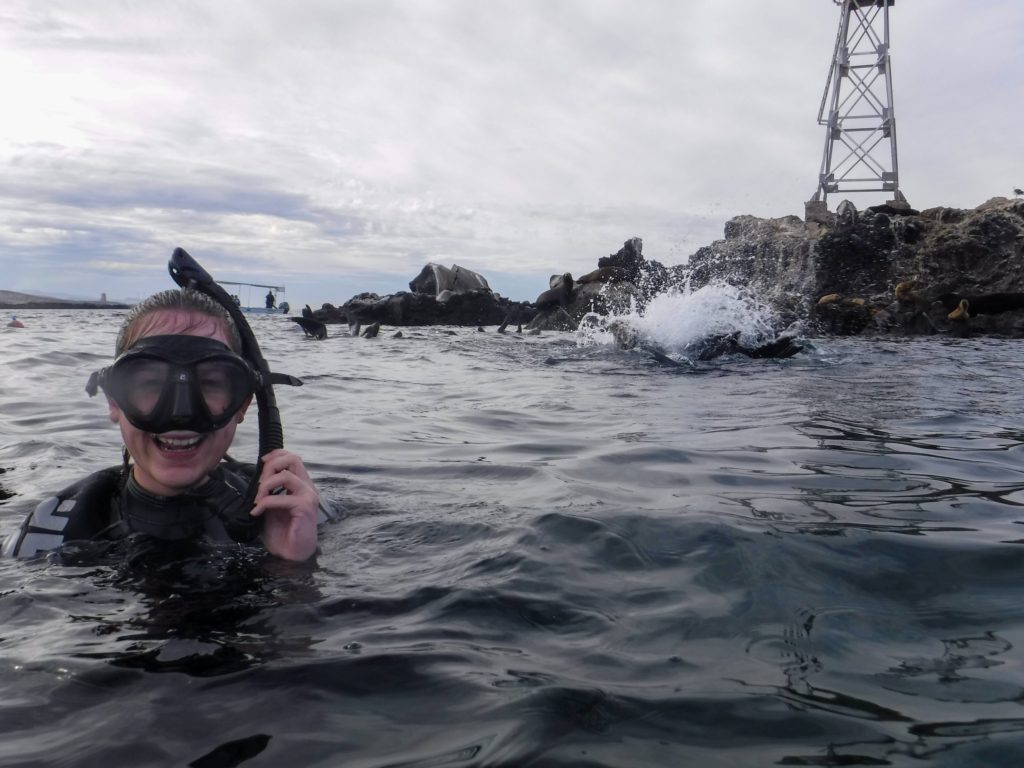
When to swim with sea lions in La Paz
The season for swimming with sea lions in La Paz runs from mid-October to the end of May each year. Breeding season is June, July and August and it’s illegal to swim with sea lions during this time, so as not to disturb the pregnant females and pups. The males also compete ferociously for the females so it wouldn’t be safe to be in the water with them.
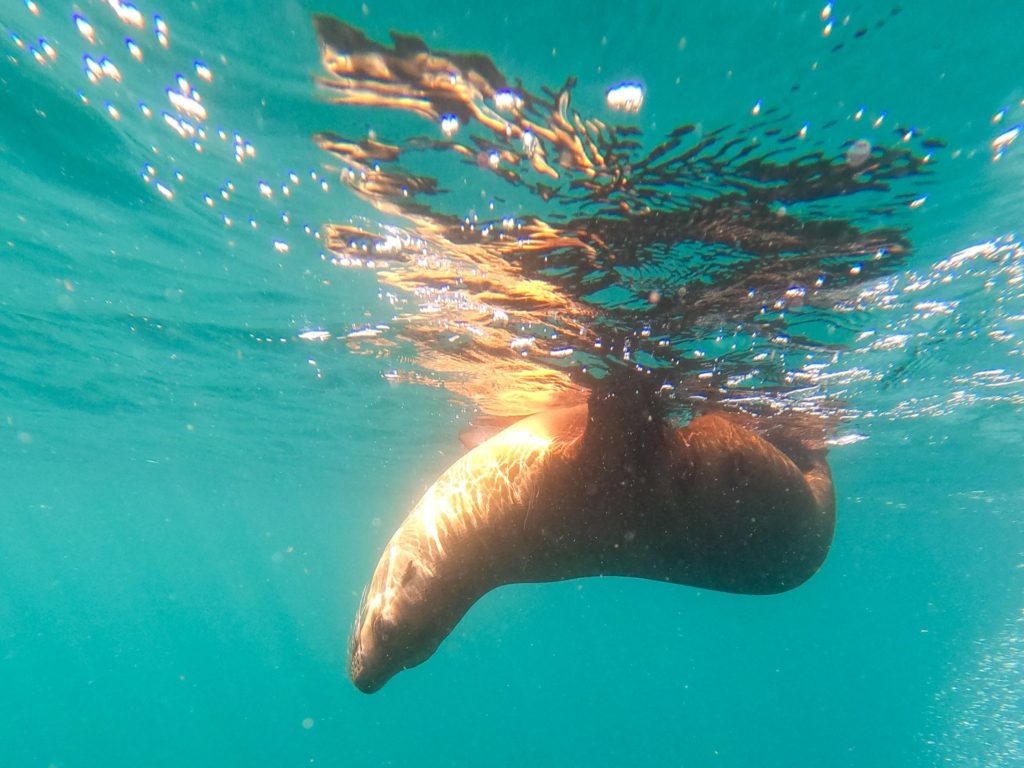
Is it ethical to swim with sea lions?
The sea lions at Los Islotes have no reason to be afraid of humans. They reside in a highly protected area and are well-respected by local tour companies. There’s a limit on the number of visitors per day, only licensed tour operators can run ‘snorkel with sea lion’ tours and all guides are expertly trained. You’re not allowed to touch the sea lions or do anything else that might stress them out or disturb them, like swimming after them. But, if one chooses to approach you on it’s own terms, it’s ok to observe it’s playful behaviour at a close distance.
When booking any wildlife tourism activity, it’s good to always choose an ethical company with a focus on sustainable practices. We’d recommend reading reviews and looking out for indications that the company respects the sea lions. Often, a company will also display their values on their website, so you can get a feel for their priorities. And if you book with an established and well-practiced company like La Paz VIP Tours, they’ll be able to time your visit so there are far fewer boats and you can have the colony nearly all to yourself (which was our experience with them in both destinations)!
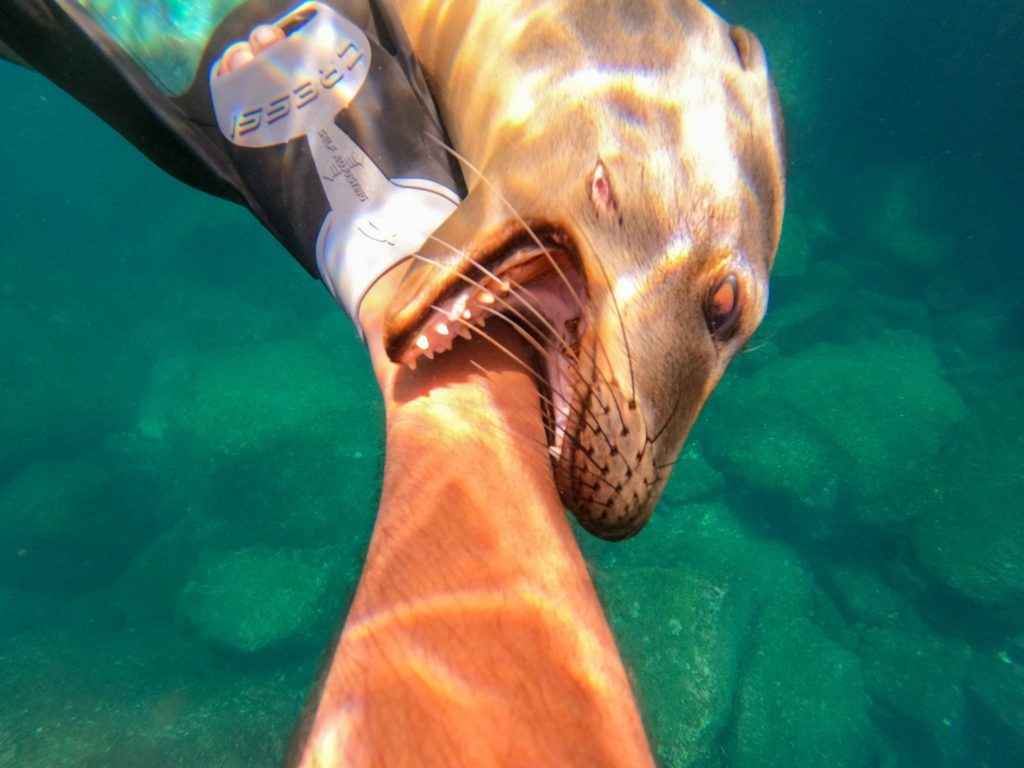
How to swim with sea lions in La Paz
The easiest way to snorkel with sea lions is to book onto a tour. This means you have a professional guide who will keep you safe as well as ensuring the sea lions are respected and unstressed by your presence. We’d highly recommend you book with La Paz VIP Tours, who run excellent ‘snorkel with sea lion’ tours, combined with either swimming with whale sharks or exploring the rest of Espíritu Island. Their priority is ethical and sustainable experiences with wildlife and they keep their groups small for a more intimate and engaging experience. All of La Paz VIP Tours’ guides are incredibly knowledgeable and will teach you so much about the landscapes and wildlife you’ll encounter on the tour. They also take lots of photos throughout the day which they send to you for free after your tour, so you can just enjoy making memories.
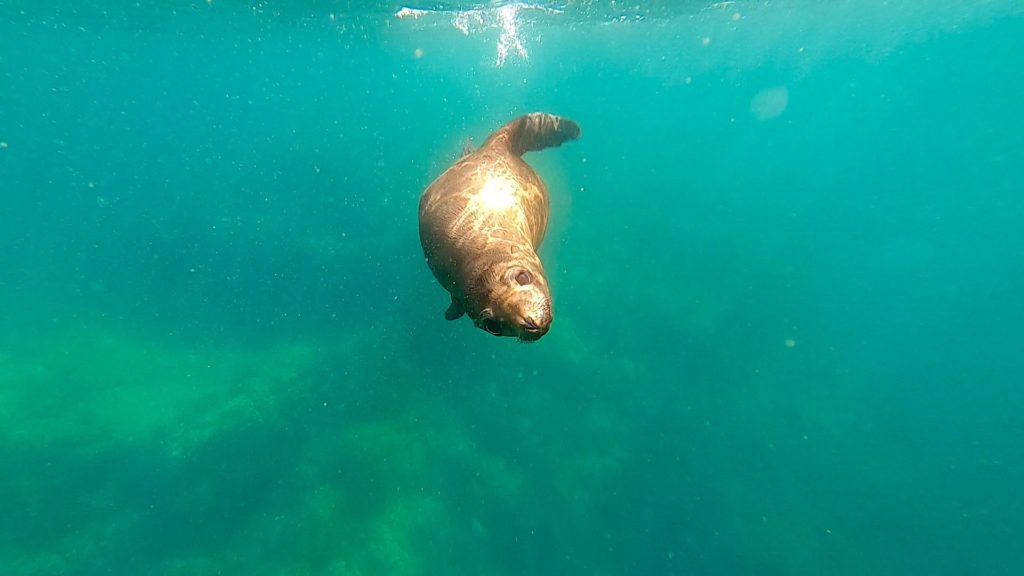
Book a La Paz Sea Lion Tour
Check out the Sea of Cortez Wonders Tour, which combines swimming with sea lions at San Rafaelito with swimming with whale sharks and lunch at Balandra Bay, voted Mexico’s most beautiful beach. Or opt for the All Islands Tour which takes the day to explore everything Isla Espíritu Santo has to offer including snorkelling with the world-famous Los Islotes sea lion colony. And if you’re keen to do it all, like we were, book both tours and uncover the best experiences La Paz has to offer! It’s also possible to combine Isla Espíritu Santo and the Los Islotes sea lions with swimming with whale sharks in the Combo Tour which we’d highly recommend if you have limited time or money, but you still want to experience these once in a lifetime opportunities.
If you’re staying in Los Cabos, you can join a Swim with Sea Lions day trip from Los Cabos. Run by Cabo Trek, this full day tour includes round-trip transportation from Los Cabos to La Paz’s Espíritu Santo Island. You’ll have time to look for whales, dolphins and stingrays on your way to Los Islotes, where you can swim with a large sea lions colony. All your snorkel gear is included, as well as a traditional Mexican lunch, snacks and beverages. Cabo Trek are winners of the TripAdvisor Certificate of Excellence every year since 2013 and are first ecotourism company in Mexico to obtain the official recognition of Responsible Whale Watching Operator assigned by the World Cetacean Alliance.
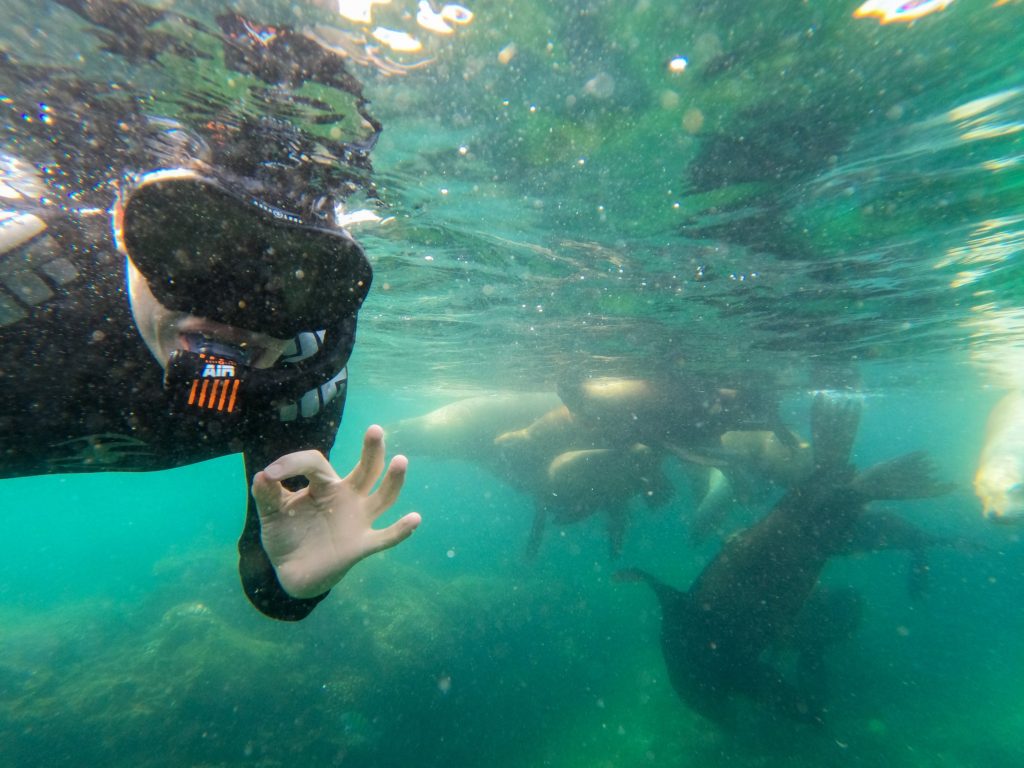
What to expect when swimming with sea lions
Known as sea wolves in Spanish, sea lions are strong swimmers and can reach speeds of nearly 20 miles per hour in the water. Although they appear bulky and clumsy on land, in the water they’re in their element and zip around quite gracefully. Sea lions hunt in areas away from where they rest, to ensure predators don’t follow them back to the colony. So they can be found resting during the day, often lazing about on the top of the water to cool off. You’ll likely see hundreds sunning themselves on the rocks, but there will be plenty cooling off in the sea all around you too.
Sea lions are curious by nature and explore with their mouths due to their lack of hands. This means they’ll often nibble on snorkels, flippers and other swimming equipment. It’s important to remember they have very strong jaws, so don’t stick your hand out or try to touch them as a bite could seriously hurt. It’s a general rule not to touch wildlife anyway, as it can stress them out or transfer harmful bacteria. But, as explained previously, it is ok to closely observe them. If you’re lucky enough to have a friendly, interested sea lion, remain calm and allow it to display its natural behaviours around you. Sea lions love playing with bubbles (like from divers’ breathing equipment), as well as other snorkel equipment, so let them explore without interference and enjoy the experience of being able to witness these beautiful creatures in their natural habitat.
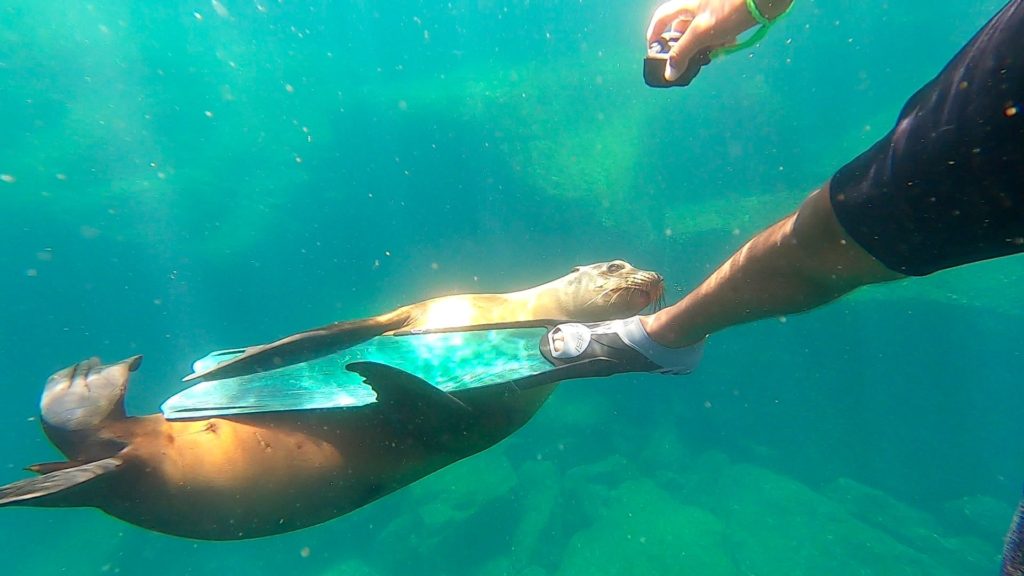
Read next:
Everything you need to know about swimming with Whale Sharks in La Paz, Mexico
Balandra Bay: Mexico’s Most Beautiful Beach
Swimming with Wild Dolphins on Australia’s Kangaroo Island
